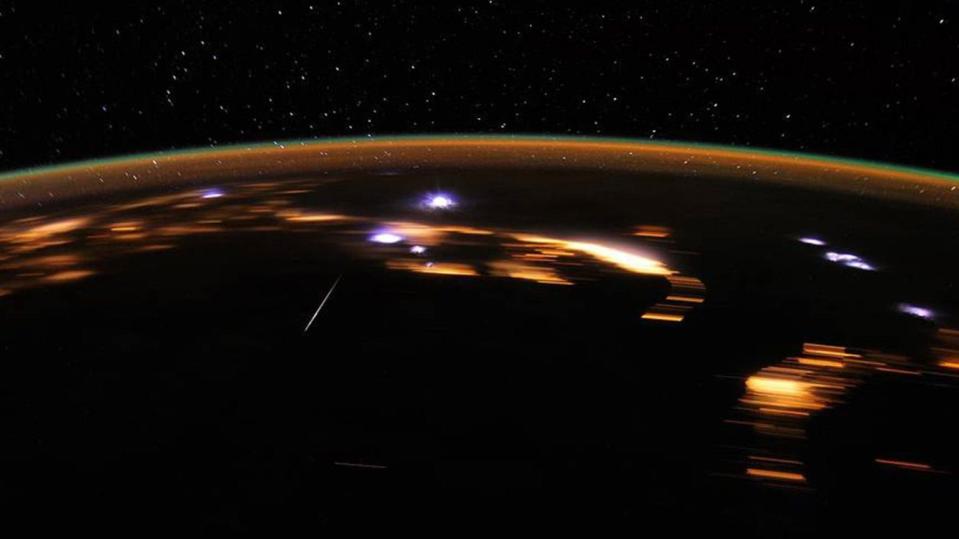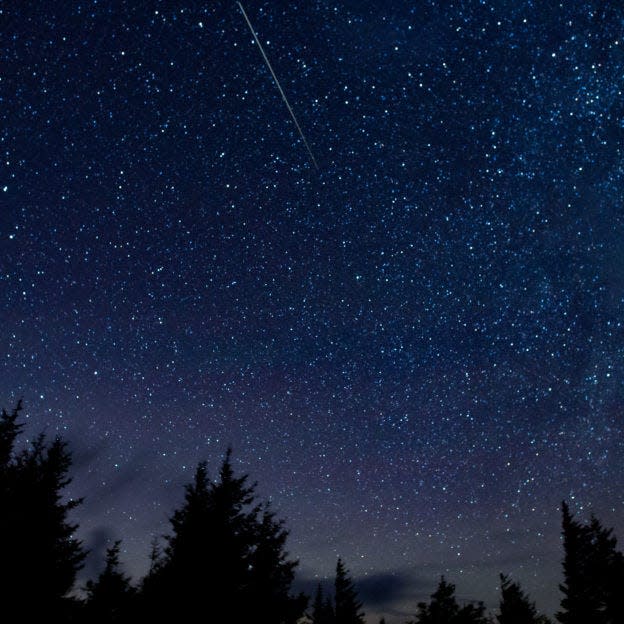After the eclipse: Lyrid meteor shower up next, others aren't far behind. How to watch
Keep your eyes on the sky, the next celestial show is set for Sunday night.
So far, 2024 has brought Ohio a total solar eclipse, the possibility of seeing the northern lights, and a visit from the "devil comet." Now, it's the Lyrid meteor shower's turn.
When is the Lyrid meteor shower?
The Lyrid meteor shower will peak from Sunday night through Monday morning, April 21 to 22, according to a NASA blog.
Sadly, the nearly-full moon that night is expected to outshine all but the brightest meteors. Even if viewing conditions are perfect -- away from lights and with a clear view of the sky -- only a few meteors per hour are expected to be visible to the naked eye.
According to NASA, the Lyrids are one of the oldest known meteor showers, first recorded by the Chinese in 687 B.C. The Lyrids are fast and bright meteors, and can show as many as 100 meteors per hour during the peak. In general, though, the shower only shows 10 to 20 meteors per hour.

What is the best way to view the Lyrid meteor shower?
The meteor shower is best viewed during the darkest hours of the night, after the moon sets, according to NASA.
For the best view, the space agency recommends finding a place away from city lights. Viewers should bring a blanket or sleeping bag so they can lie flat on their backs, with their feet pointing east, and look up at the sky. After about half an hour, when their eyes adapt to the dark, viewers should start seeing meteors. The show should last until dawn.
What are the Lyrids, and where do they come from?
Meteors are debris from comets or broken asteroids. In the case of the Lyrids, they originate from comet C/1861 G1 Thatcher, discovered on April 5, 1861, by A. E. Thatcher, according to NASA. Every year, the earth passes through the debris left behind by comets. The pieces of space debris then burn up in the atmosphere, creating streaks in the sky or fiery bursts.
The Lyrids appear to originate in the night sky from the area around the constellation Lyra, which is where the meteors get their name.

After Lyrid, Eta Aquarid and Perseid meteor showers are not far behind
The Eta Aquarids meteor shower is expected to peak this year from May 4 to 5, according to NASA. Bill Cooke, of the Meteoroid Environment Office at NASA’s Marshall Space Flight Center in Huntsville, Alabama, expects it to be an outburst year.
“Visual rates could be as high as one per minute in the Southern Hemisphere, with just slightly less in the Northern,” Cooke tells the NASA Watch the Skies blog.
The crescent moon that night shouldn't greatly dim the show, according to NASA.
The big show every year is the Perseid meteor shower, which this year will peak from Aug. 12 to 13 with 50 to 100 meteors per hour, according to NASA. Cooke says there will be no moonlight to spoil the view that night, according to the NASA blog.
What are the Eta Aquarids?
Appearing to originate from the constellation Aquarius, the Eta Aquarids peak in early May each year. The meteors are known for their speed, and they can leave glowing "trains" -- bits of debris in their wake -- that can last for up to a full minute, according to NASA.
The meteors originate from Halley's Comet, which returns every 76 years and was last seen in 1986.
What are the Perseids?
The Perseids appear to originate from the constellation Perseus, and are considered to be the best meteor shower of the year, according to NASA. At their peak, the Perseids can generate up to 100 meteors per hour.
These meteors originate from comet Swift-Tuttle, which orbits the sun every 133 years and was last seen in 1992. Swift-Tuttle is large, with a nucleus measuring 16 miles wide. According to NASA, that's nearly twice the size of the object thought to have caused the extinction of the dinosaurs.
This article originally appeared on Record-Courier: Lyrid meteor shower 2024 is Sunday. Eta Aquarids, Perseid coming soon

